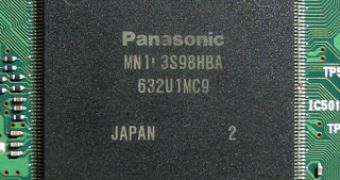A smaller fabrication process has a number of advantages, such as the possibility to cram more transistors on the same area and decrease power consumption while increasing the number of chips that are produced from a single silicon wafer. While Intel touted its upcoming 45-nanometer fabrication process and the central processing units that will be based on it, it looks like another company is very likely to beat Intel at its own game and release the first 45nm chips.
According to the news site reghardware, Matsushita, the parent company of the general electronics devices manufacturer Panasonic, announced that it will be the first producer to launch a significant quantity of chips made using the 45-nanometer fabrication process. The new chips from Panasonic will be used in Diga-brand DVD and Blu-ray Disc recorders and they will take the role of a video processing unit named UniPhier, which stands for UNIversal Platform for High-quality Image Enhancing Revolution.
The new multimedia products from Panasonic will hit the market on the first of November in Japan and so Panasonic may become the first company to actually market the 45nm based chips as they are scheduled for launch a full week earlier than the Penryn class of central processing units from Intel, that anyway may not be readily available for purchase just immediately after their launch. The Panasonic made multimedia chips are composed on 250 million transistors and they offer hardware decoding capabilities for MPEG 4 video streams while also being capable of dealing with two 1080p images at the same time.
According to the manufacturing company, the 45nm build processing units are also capable of doing other things , besides decoding video streams as they come with integrated 3D graphics units as well as cores capable of handling encryption algorithms. Panasonic has some big plans for its UniPhier range of chips as they should be well suited for a broad range of applications from mobile phones to in-car entertainment systems. In order to save costs, the producer also announced that there will be three versions of those chips and that the mobile phone one will only implement basic instructions and a simplified parallel processor, while the second one, aimed at multimedia devices, comes with an additional data parallel processor and a hardware engine for specific algorithms. The third and most complete version will come equipped with more hardware engines and it will be closely based on the second model.
As these chips from Panasonic are aimed at the general public, all three versions can be easily fitted into a system that also incorporates an ARM processing unit for better power management and thermal control, a generic memory controller as well as other controller units of I/O operations and graphics processing units.

 14 DAY TRIAL //
14 DAY TRIAL //